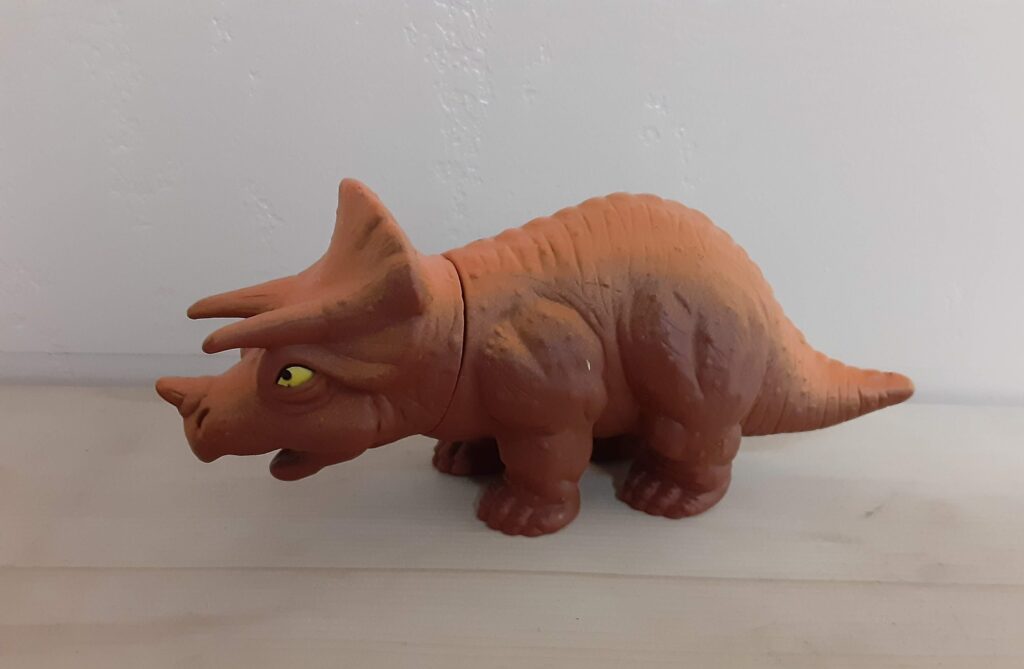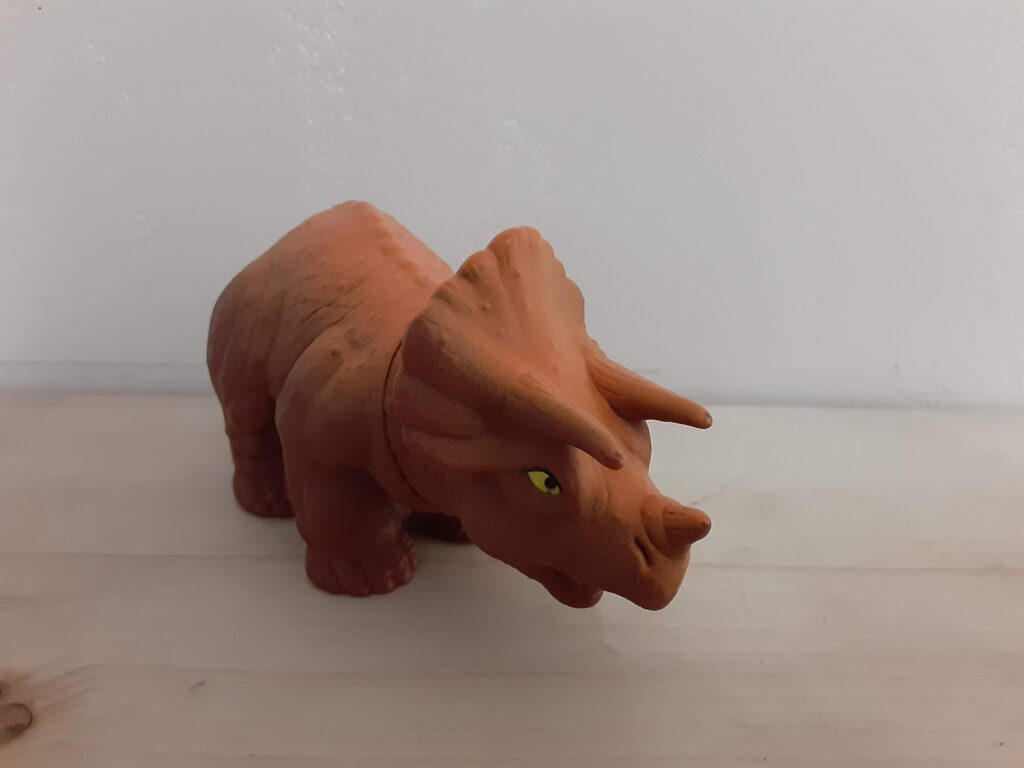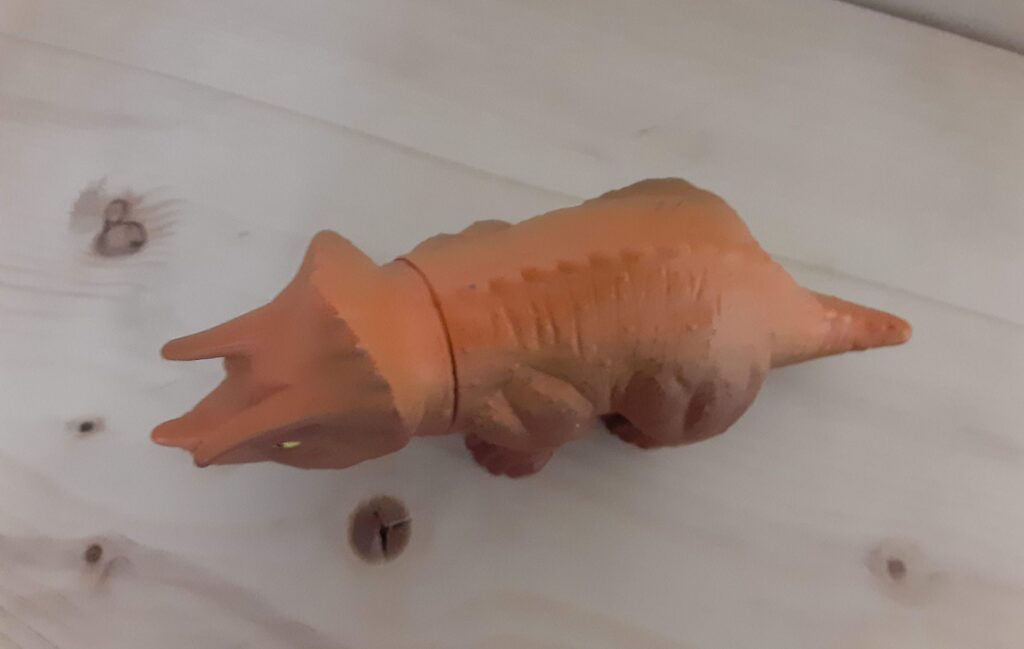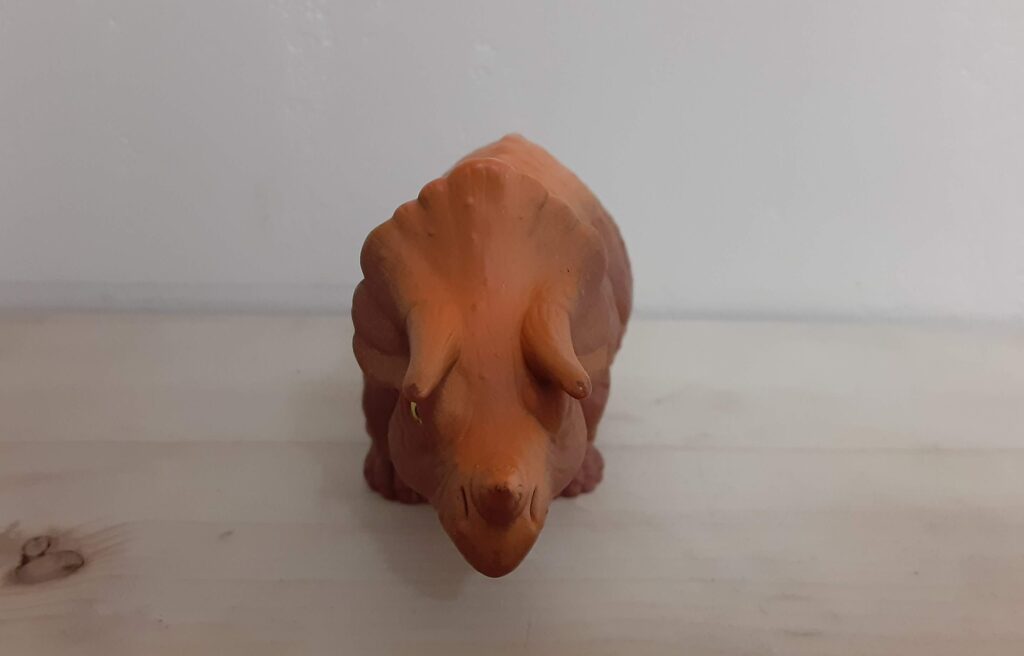Review and photos by Charles Peckham, edited by Suspsy
The Wendy’s Triceratops that Definitely Dinosaurs put out in 1988 was a very odd, scientifically implausible little toy. Still, in my humble opinion, it had panache. The foremost reason for this was its striking neon colour choices. It was able to stand apart, and that made it enduring.

Like any good idea, Definitely Dinosaurs wasn’t done until it was done to death. In 1996, long after Jurassic Park had completely reshaped the popular notion of dinosaurs, Playskool, like a desperate milkmaid trying to choke every drop possible from the dehydrated udder of a malnourished cow, decided to roll out repaints of the same toys that they had been giving away free with a burger and fries at Wendy’s restaurants not ten years prior. Only this time, they were selling them at your local toy store.

I can’t tell you if this was a financial success or not. Playskool did a third repainted series in 2000, so it couldn’t have been too much of a flop. What I can tell you is that, for me personally, the nostalgic charm of the Wendy’s Triceratops was irreverently destroyed by the colour choices. The figure is brown. It’s really not a bad shade of brown, except it may remind one of the particular shade of that unbecoming substance paleontology types might refer to as pre-coprolite. I own a suit that’s a similar shade of brown, and I quite like it, but it’s just not a good color for any dinosaur, especially not a toy of one.

I suppose we might as well ask if there’s any logic behind this colouring (i.e., do we think a brown Triceratops is scientifically plausible). There are lots of brown animals in the world today. Most of them aren’t closely related to Triceratops, but some living dinosaurs are brown. I think the fact that it’s such a deep, dark, United Parcel Service-style brown is what makes it seem unnatural to me. Why would a Triceratops want to be so brown? So that it could hide in the mud? Mud-dwelling animals that are large (hippos, for example) don’t need to worry about camouflage too much.

As previously mentioned, though, this isn’t the sort of toy that one buys for scientific accuracy anyway. If the colouration was unnatural but aesthetically pleasing, it’d be great. However, especially after the funky fresh colouration of the predecessor, the brown and light orange colouration seems very drab and uninspired. It’s the colour you would choose if you wanted everyone to know you didn’t want to go the extra mile when reissuing an old toy. Was there a lack of effort on this toy? Perhaps not, but that’s the impression that it gives.

So there’s not much else to say about this toy that I didn’t already say about the original version. The eyes are yellow and nicely detailed, complete with pupils and eyelids. The only point of articulation is on the neck, which rotates 360°.

In a word, this toy is ‘fine.’ It’s not exciting. It’s not fun. It’s just kind of there on the shelf next to the other dinosaurs, and if you have it, you can check one off your list of Definitely Dinosaurs. It exists, and it is relatively easy to find everywhere used toys are sold if you want your own. I feel like I should find a succinct quip to end this review with, but given its dull subject matter, perhaps it’s more fitting that I stop right here.
Support the Dinosaur Toy Blog by making dino-purchases through these links to Ebay and Amazon. Disclaimer: links to Ebay.com and Amazon.com on the The Dinosaur Toy Blog are often affiliate links, when you make purchases through these links we may make a commission
